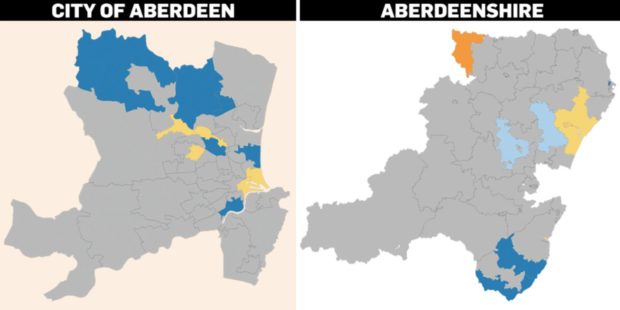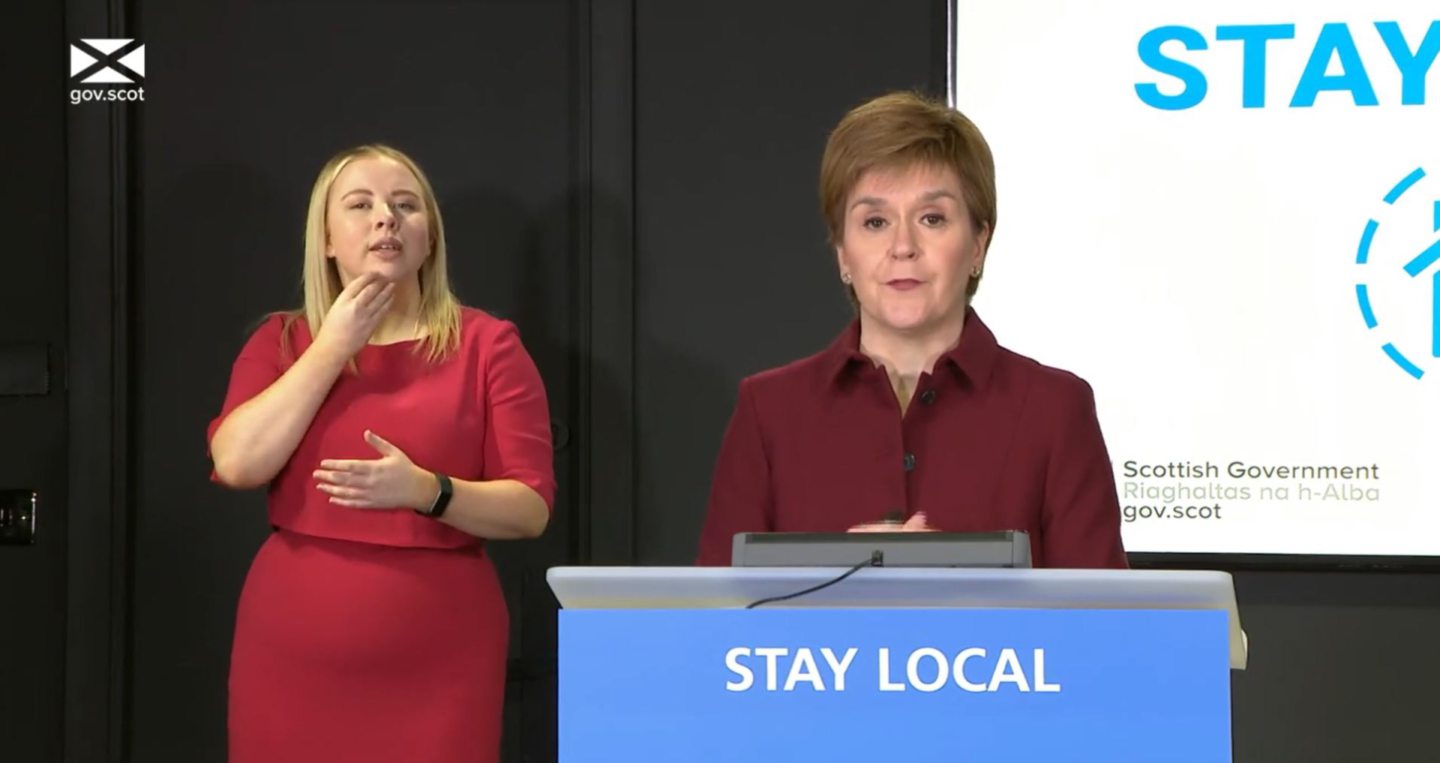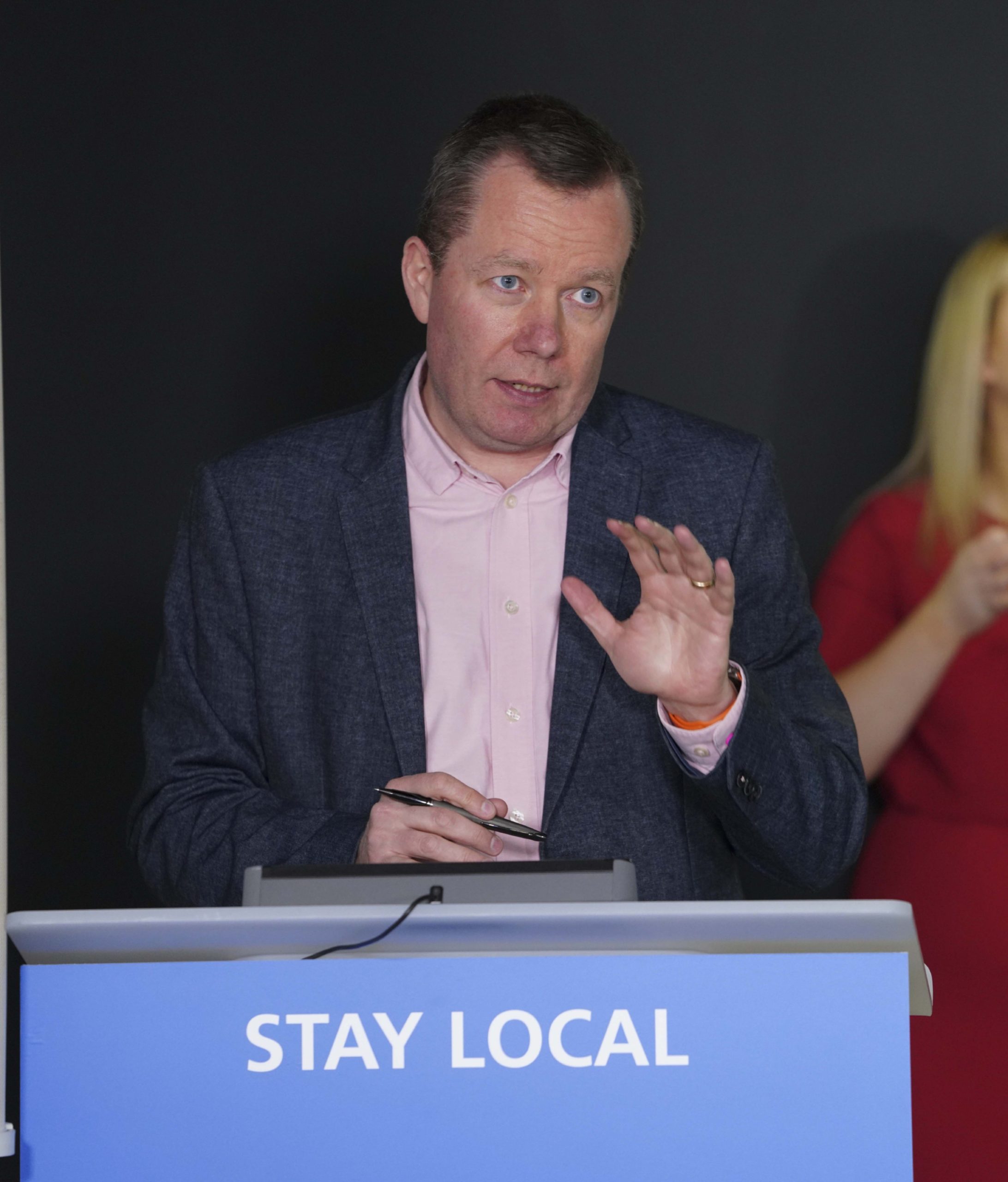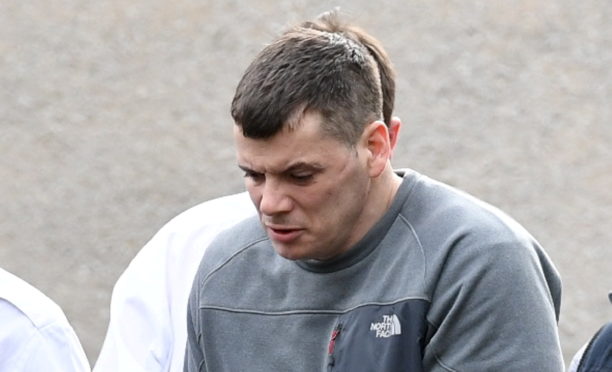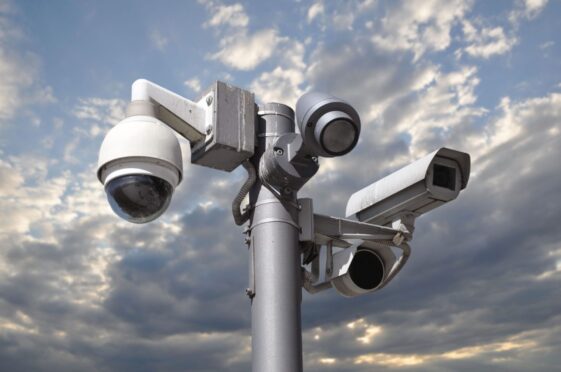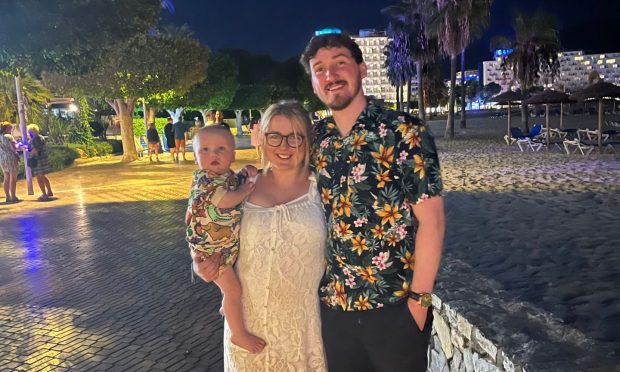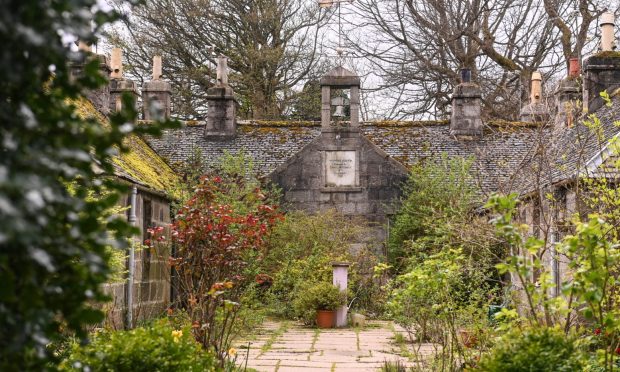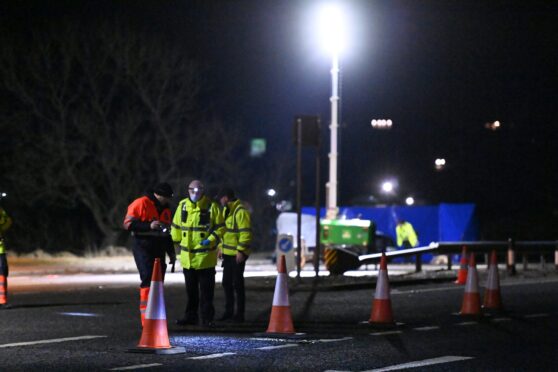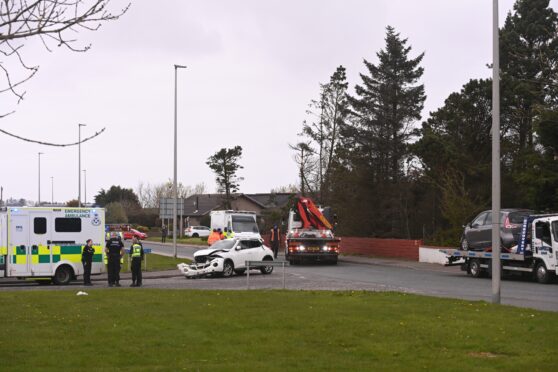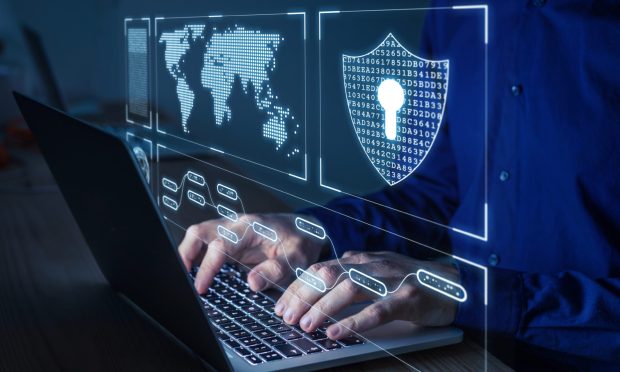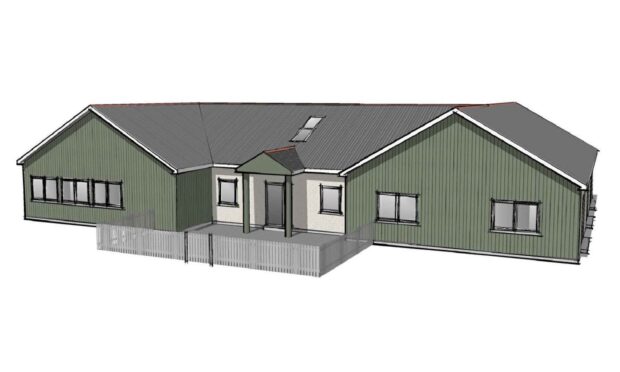Coronavirus cases in the north-east have dropped to their lowest level in four weeks.
Between March 28 and April 3, 139 cases were confirmed in the region.
This is an increase of 45 (24%) on the previous seven-day period.
And this is the lowest cases have been in Aberdeen and Aberdeenshire since the seven-day period ending March 7.
With restrictions easing across Scotland on Monday, public health experts will be now watching the figures closely to see what impact the gradual lifting process has on infection rates.
In mainland Scotland, the north-east continues to have one of the lowest seven-day positive rates, with only Argyll & Bute, Dumfries & Galloway, the borders, Inverclyde, South Ayrshire, Moray and West Dunbartonshire having a lower positivity rate.
Clackmannanshire, Renfrewshire, West Lothian, North Lanarkshire, Glasgow City, Falkirk, East Ayrshire and Stirling are the areas with the highest rates.
Looking at the rate per 100,000, Clackmannashire’s rate (240.6) is almost nine times higher than that of Aberdeenshire (26.8).
How is the positivity rate calculated?
Coronavirus cases can be put into context by looking at them as a rate per 100,000 population.
This rate is then categorised into one of five bands by Public Health Scotland (PHS). If the number of cases in the seven-day period is two or fewer, it is marked as suppressed.
Each area of the country has been divided into regions of roughly similar populations, and are the same used in a wide range of national datasets released by the Scottish Government.
In the past day, there have been no new deaths registered, however, due to the Easter weekend, registry offices have closed, so that figure is expected to increase today. Since the beginning of the pandemic, 7,614 deaths have been registered.
In the past 24 hours, 259 new cases were reported, with around 2% of those people tested returning positive results.
A total of 220,496 people have now tested positive in Scotland.
What’s the picture like Scotland wide?
The Scotland-wide seven-day positive rate per 100,000 population is 49.1, with 2,680 people testing positive during this period – down around 1,000 on the previous week.
Of all the tests carried out, 2.2% returned a positive result.
The area of the country with the highest positivity rate for Coronavirus cases is Clackmannanshire, with a rate of 240.6 per 100,000
Aberdeen
Aberdeen has an average rate per 100,000 population of 30.2 up from 45 during the previous seven-day period.
The figures show 69 positive cases of Covid-19 were identified during this period, a decrease of 33% (34) on the previous period.
Of all the tests carried out in the region, 1.3% were positive.
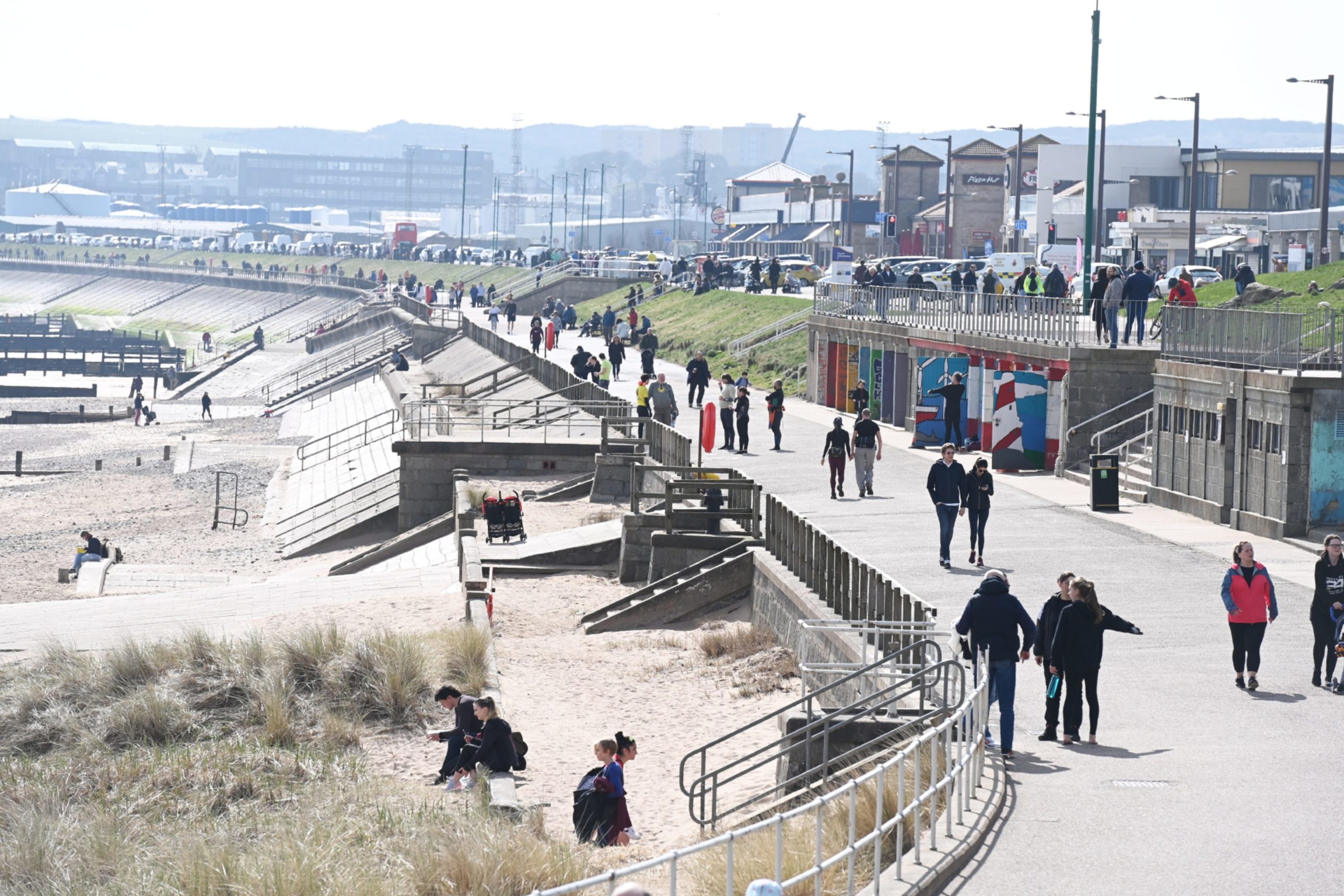
A map showing the breakdown of Coronavirus cases by neighbourhood reveals no neighbourhoods in Aberdeen are in the highest two categories of rate per 100,000.
City Centre east, Hanover South, Cummings Park, Bucksburn South and Woodside all have rates between 100 and 199 cases per 100,000. However, these have recorded an average of 4.4 cases in the last week.
Elsewhere in the city, six other areas have their cases displayed, which means they have a rate of greater than 50 cases per 100,000. Again though, these areas have an average of just over four cases.
The majority of the city, however, do not have their case numbers displayed in the data made available by Public Health Scotland. This means the number of cases in those areas is less than three, with the actual data removed to prevent the identification of individuals.
Aberdeen’s Lord Provost Barney Crockett said the numbers are “very encouraging” and is urging residents across the region to go for their vaccines when they are invited to.
He said: “We can see Covid-19 is being overcome although my thoughts go out to anyone suffering from it.
“These figures are very encouraging. The good thing for me is that the people of the north-east and Aberdeen are stepping and getting their injections.”
Aberdeenshire
In Aberdeenshire, there have been 70 cases in the last seven-day period, with a positive rate of 26.8 per 100,000 – below that of the Scottish average.
The test positivity rate for the region, at 1.1% is also below that of the national average.
The neighbourhood of Portsoy, Fordyce and Cornhill is currently in the second-highest category, with a rate of 222.3 cases per 100,000 people.
An increase in cases has also seen in Ellon and the surrounding areas. The latest figures show 25 cases combined for the two Ellon neighbourhoods and Ythanside.
The vast majority of the region, however, still has its data suppressed. Forty-nine of Aberdeenshire’s 59 regions have between zero and two cases.
Ellon and district councillor Isobel Davidson said the spikes in and around the riverside town were “concerning” and hopes those with the condition are following public health advice.
She said: “It is concerning that there is a rise in cases although I am aware that there is significantly more testing, therefore more cases of asymptomatic people will be found.
“I am sure that those affected are taking appropriate action, supported by public health and wish them well.”
And Ellon councillor Anouk Kloppert said: “With our schools now off for their two week Easter break, I hope that these 17 individual detected cases all experience a full recovery and our most vulnerable groups in the community continue to keep safe and well.
“We all share this responsibility to keep each other safe, we all have an important role to play here.
“However, from what I understand, the estimate is that Aberdeenshire could move into Level two based on the new thresholds set out in the strategic framework.
“Let us, therefore, continue to work hard keeping each other safe and well so that businesses and leisure can return to some normality, which is not only good for the economy, and each and everybody’s livelihood, but above all for everybody’s mental health and well being.”
Meanwhile, Nicola Sturgeon said she expects vaccine passports or certification in some form in Scotland and called for a “mature, grown-up debate” about their use.
The First Minister said she was “open-minded” on the issue of vaccine passports but insisted that there needed to be public support and confidence in the idea.
Speaking at a Scottish Government coronavirus briefing, Ms Sturgeon warned that a scheme to enable people to prove their vaccine or infection status must not “gloss over the practical and ethical issues”.
But she said that the Scottish Government should look “very carefully” at the concept of vaccine passports or certification if it could help society return to normal following the coronavirus pandemic.
“I think we will see some kind of vaccine certification starting to be used,” Ms Sturgeon said.
She added: “We just don’t know for sure yet, exactly what role they will play.
“I’m not one of these people that says never, ever, ever, because I think we need to be open-minded to anything that helps us get back to normality.
“But nor am I one of these people that just says we’ll just forget some of the really complex issues that we’ve got to think through.
“Let’s have a grown-up debate about this and trial where that is appropriate, learn lessons as we go, but get to the right position through a mature, grown-up debate.”
Highlighting “ethical and equity issues”, Ms Sturgeon also explained the Government would have to ensure the system was fair for those who were unable to get the vaccine, due to their age or for medical reasons.
Scotland’s national clinical director, Professor Jason Leitch, said forms of certification were already in force for overseas travel and certain industries – based on a person having already caught coronavirus or being vaccinated.
“I think Covid certification in the round will become a thing,” Professor Leitch said, although he added: “I’m sceptical about the vaccine bit being linked into pubs, bars and restaurants.”
Scotland’s Health Secretary, Jeane Freeman, said on Monday the Government was working to develop the tools needed for digital vaccine certificates.
Ms Freeman said she favours digital certificates over paper versions as she believes the latter would place an unnecessary burden on the health service.
A UK Government review into “Covid status certification” found they could “potentially play a role” in settings such as theatres, nightclubs and mass events, and might also be used in pubs and restaurants to reduce social distancing restrictions.
But Prime Minister Boris Johnson is facing widespread opposition to the proposal, with Labour expressing scepticism and at least 40 Conservative MPs opposing the idea of vaccine passports.
Coronavirus in Scotland – track the spread with these charts
Covid vaccine in Scotland: Track the rollout progress with these charts
